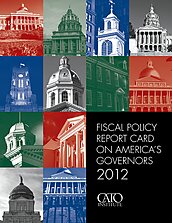That is the backdrop to this year’s 11th biennial fiscal report card on the governors, which examines state budget actions since 2010. It uses statistical data to grade the governors on their taxing and spending records—governors who have cut taxes and spending the most receive the highest grades, while those who have increased taxes and spending the most receive the lowest grades.
Four governors were awarded an “A” in this report card—Sam Brownback of Kansas, Rick Scott of Florida, Paul LePage of Maine, and Tom Corbett of Pennsylvania. Five governors were awarded an “F”—Pat Quinn of Illinois, Dan Malloy of Connecticut, Mark Dayton of Minnesota, Neil Abercrombie of Hawaii, and Chris Gregoire of Washington.
Many states are facing major fiscal problems in coming years. Rising debt and growing health and pension costs threaten tax increases down the road. At the same time, intense global economic competition makes it imperative that states improve their investment climates. To that end, some governors are pursuing broad-based tax reforms, such as cutting income tax rates and reducing property taxes on businesses. The bad news is that many governors are expanding narrow “tax incentives,” which clutter the tax code in an attempt to micromanage the economy.
This report discusses these trends and examines the fiscal policy actions of each governor. Hopefully, policymakers in more states will be encouraged to follow the fiscal reform approaches of the top-scoring governors.


